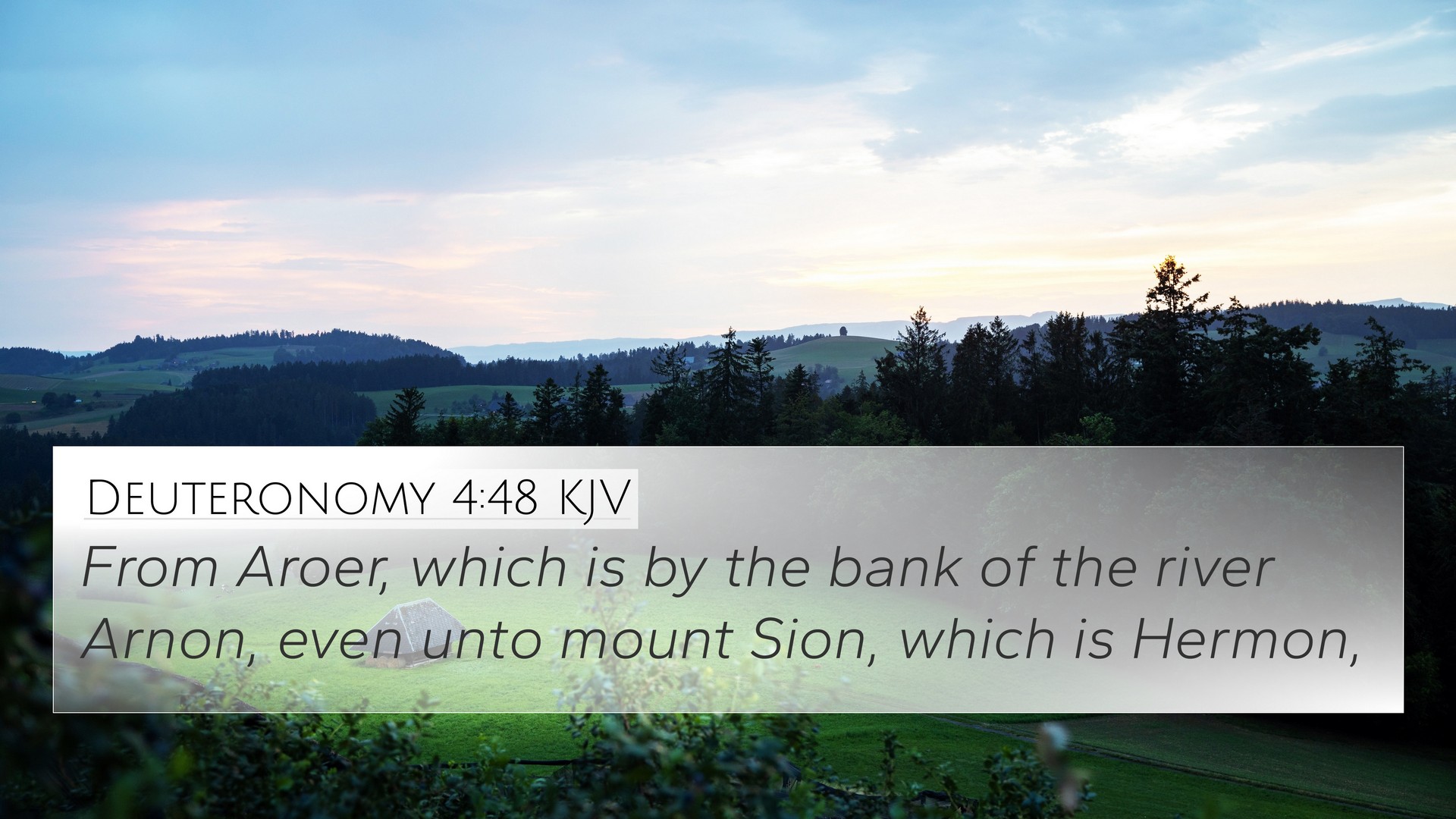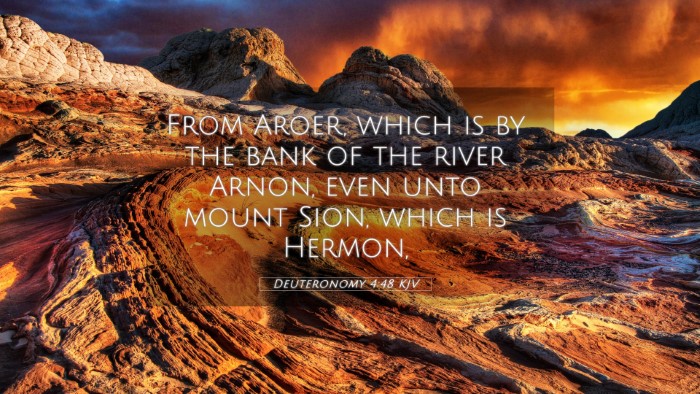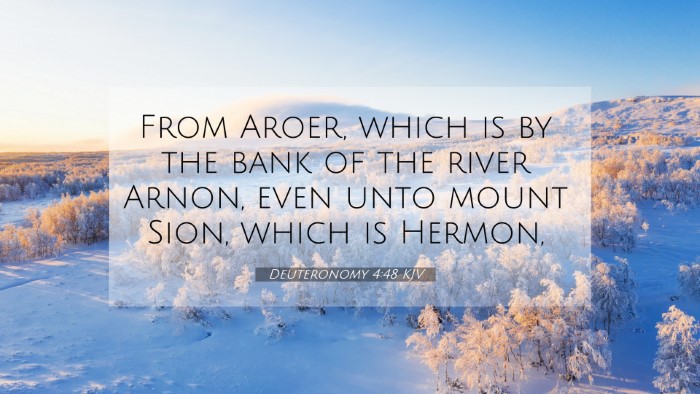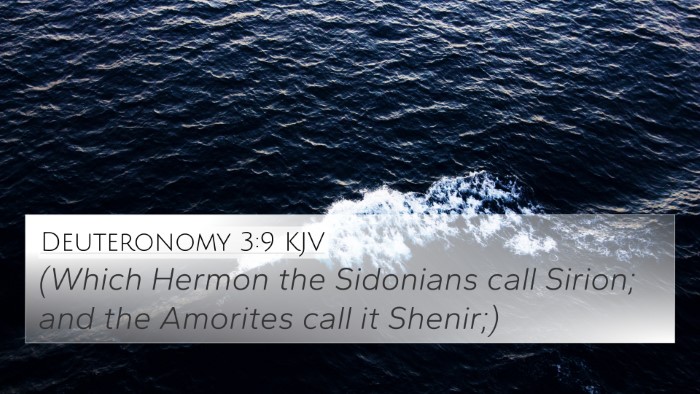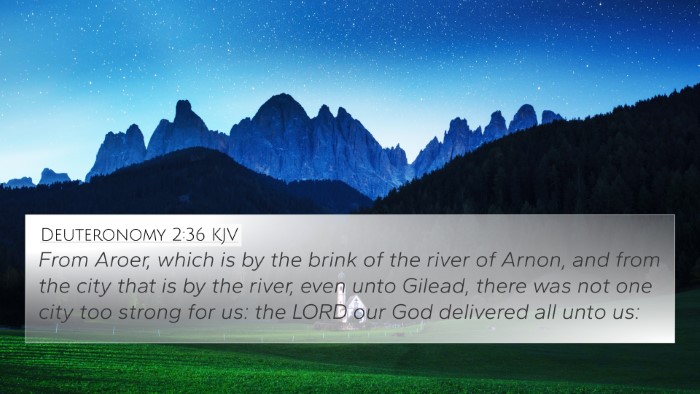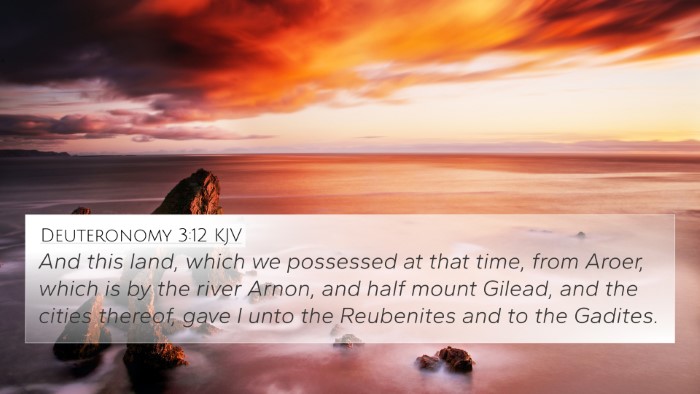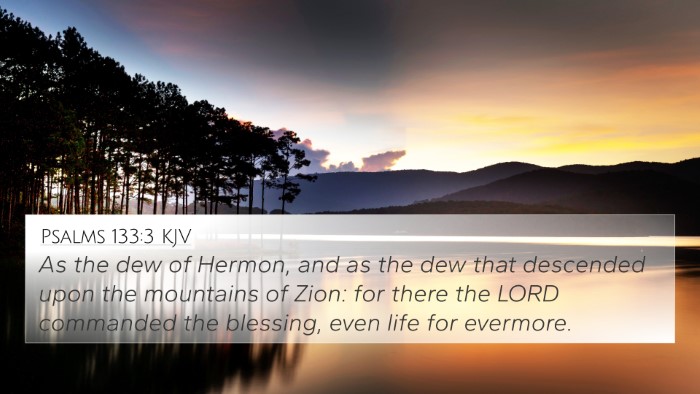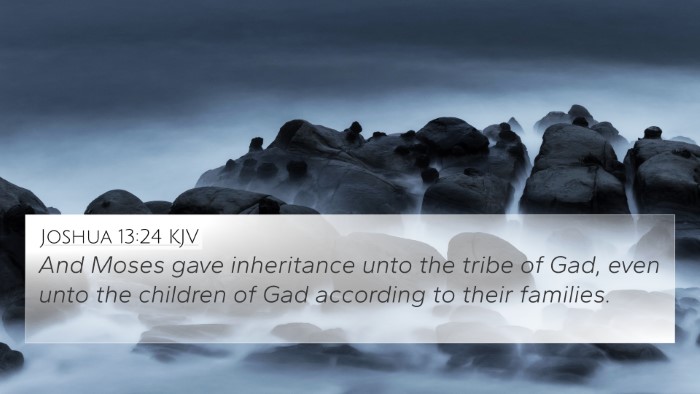Understanding Deuteronomy 4:48
Deuteronomy 4:48 states, "From Aroer which is by the bank of the river Arnon even unto mount Sion, which is Hermon." This verse serves as a geographical reference to the extent of the territory that the Israelites were to recognize as part of their promised land. Its significance can be explored through various commentaries that offer deeper insights into its context and implications.
Commentary Insights
Various public domain commentaries, including those by Matthew Henry, Albert Barnes, and Adam Clarke, provide detailed interpretations of this verse:
- Matthew Henry: Henry emphasizes the significance of the land mentioned, highlighting that it represents not only a physical location but also God's promise to His people. The verse serves to remind the Israelites of the inheritance granted to them and the rich blessings that accompany obedience to God's commandments.
- Albert Barnes: Barnes focuses on the geographical boundaries laid out in the verse. He describes how these locations not only mark physical territories but also symbolize the extent of God's provision. Aroer and mount Sion (Hermon) represent places of historical and spiritual importance, thus linking past events to the current promises made to Israel.
- Adam Clarke: Clarke elaborates on the importance of Aroer as a significant landmark and correlates it with the broader narrative of the Israelites' journey. He notes that the mention of Mount Hermon illustrates the height of Israel's aspirations in contrast to their earlier struggles—in essence, a divine elevation of the people of Israel.
Thematic Biblical Connections
In understanding this verse, it is helpful to reference other scripture that talks about land, promises, and God’s covenant with His people. Here are some cross-references that enhance the meaning of Deuteronomy 4:48:
- Genesis 15:18-21: God's covenant promise regarding the borders of the land given to Abraham's descendants.
- Exodus 23:31: God's assurance of land boundaries for Israel, illustrating the divine protection and promise of the land.
- Joshua 13:25: The fulfillment of territories conquered by the Israelites under Joshua's leadership.
- Psalm 68:15-16: A poetic reflection on God's choice of Mount Zion as His dwelling place, emphasizing its significance.
- Numbers 34:2-12: Detailed instructions regarding the division of the land among the tribes of Israel.
- Isaiah 54:2: A metaphorical encouragement about expanding one's tent, which resonates with the promise of land abundance.
- Hebrews 11:9-10: A reference to Abraham’s faith in God’s promise of a heavenly city, parallel to the promised land.
- Romans 4:13: Discusses the promise made to Abraham and his descendants, building a bridge from the Old to the New Testament.
- Deuteronomy 11:24: The encouragement to possess the land that God has given, marking it as a place of blessing.
- Micah 4:1-2: A prophetic view of Zion as the center of instruction and divine presence, correlating with the significance of mount Sion mentioned in our verse.
Connections between Bible Verses
The relationships between Deuteronomy 4:48 and the cited cross-referenced verses illustrate how God's promises are interwoven throughout the Bible. This intricate web of connections enhances our understanding of not only the immediate text but also the overarching themes of provision, inheritance, and divine promise:
- Linking Bible scriptures: The mention of physical locations such as Aroer and Mount Hermon connects to themes of divine geography and national identity.
- Comparative Bible verse analysis: By aligning with passages that emphasize covenant and land, the depth of God's promises becomes evident.
- Bible verses that relate to each other: Each cross-reference builds upon the theology of land ownership and God's chosen people, showing continuity through the Old and New Testaments.
- Scriptural cross-referencing: By examining these verses, believers can see the extensive nature of God's commitment to His people through generations.
Tools for Bible Cross-Referencing
To explore these connections further, various tools can aid in Bible study:
- Utilizing a Bible concordance can help find key words associated with the geographical themes found in Deuteronomy 4:48.
- A Bible cross-reference guide allows for practical and thematic studies regarding inheritance promises.
- Implementing cross-reference Bible study techniques can lead to a deeper understanding of the interrelationships between passages.
- Learning how to use Bible cross-references effectively promotes comprehensive engagement with Scripture.
Conclusion
Deuteronomy 4:48 serves not only as a geographical reference but a profound reminder of God's faithfulness in fulfilling His promises. Through cross-referencing biblical texts and understanding their interconnections, believers can gain deeper insights into their spiritual heritage. Exploring thematic Bible verse connections will reveal God's consistent character and His eternal commitment to His people.
